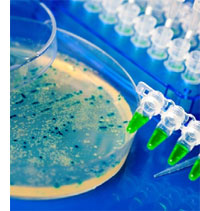Water withdrawal and consumption is experiencing a time of change as a result of population increase, changing food consumption habits and climate change. Along with increased demand for meat products in countries which typically had a vegetable based diet, new industries such as biofuels are developing in response to need for reduction on reliance of fossil fuels. Increased meat consumption, requires greater livestock headcount and biofuels require growth of additional volumes of crops, such as wheat and maize – both trends adding to the squeeze on water supply.
Globally agriculture is the largest user of water, with industry and energy combined accounting for around 20% of demand. Industry uses around 10% of water-withdrawal in a variety of ways including steam generation, as a solvent in a process, within heating and cooling systems, and as a raw material. The impact of industry on water usage may seem minor when compared with the agricultural sector, however the real issue is with the water discharged from industrial processes and the impact on the water resource. With pollutants varying from heavy metals to persistent organic matter, focus is on reducing the environmental and human impact of this discharged water.
The global water treatment industry is comprised of a number of independent segments, all supporting different industries, and all operating within their own market framework, with unique challenges, growth drivers and constraints, as well as value chain. A range of specialty water treatment chemicals, exceeding $20 billion globally, are used in the industry including corrosion inhibitors, coagulants and flocculants and biocides – both commodity and specialty.
Consumption of specialty biocides in water treatment in the major geographic regions exceeded 90,000 tonnes in 2008, the USA accounting for the lions share followed by Europe. Specialty biocides used in water treatment comprise a diverse range from halogenated to nitrogen based actives. Key segments using specialty biocides include: cooling water, oilfield and gas production, pulp and paper production and recreational water treatment. Each region and water treatment segment has specific regulatory control; in the USA for example it’s the EPA, whereas in Japan the MHLW is involved. In Europe, suppliers of biocides face the greatest regulatory change of all following the introduction of the Biocide Product Directive (BPD).
Merger and acquisition activity within the chemicals industry also continues to create challenges within the specialty biocides market, impacting the competitive landscape particularly in water treatment applications. Key acquisitions have occurred over the last few years, examples follow, however the latest events in 2009 create the biggest change of all within specialty biocides.
In the USA and in the UK, BWA Water Additives, formerly known as BioLab Water Additives, acquired the sales, marketing, technology and supply chain assets from Chemtura in 2006. Chemtura was ranked at number 2 in the market in 2004-2005 with over 15% market share due to sales of halogenated biocides. BWA remains a key contender for market share within the North American and European specialty biocides market with brands such as Bellacide® and BromiCide®. Chemtura was also a key player in the European market with significant sales within water treatment.
Ashland Inc. completed the acquisition of Hercules Incorporated in November 2008. The structure of the Ashland business, including Hercules, was focused around 5 business units, including Ashland Performance Materials, Ashland Aqualon Functional Ingredients, Ashland Consumer Markets, Ashland Distribution and Ashland Hercules Water Technologies. The combined paper and water businesses of each company create a global paper and water technologies business with annual revenues of $2 billion. Hercules’ leadership position in pulp and paper technologies increases Ashland’s participation in this segment.
Arch Chemicals completed the acquisition of the water treatment chemicals business of Advantis Technologies, Inc in October 2008. Advantis was a manufacturer and marketer of branded swimming pool, spa and surface water treatment chemicals. The acquisition expanded Arch’s pool and spa dealer channel and added complementary products and technologies to their portfolio.
In 2009 Dow finalised the acquisition of Rohm & Haas and BASF acquired Ciba, all four businesses had major activity within the specialty biocides market.
Dow’s specialty biocide portfolio focused on nitrogen-based biocides, phenolics and other products such as glutaraldehyde, whilst Rohm & Haas’ business focused on organosulfur and organometallic biocide products. The newly formed business Dow Microbial Control now offers an even broader portfolio benefiting from the complementary biocides that the Rohm & Haas business has contributed to the mix. Dow Microbial Control will now be positioned as number one in cooling water applications and the paper industry in the USA, when combining sales of the Rohm & Haas business with Dow. BASF and Ciba also benefit from synergies within different product groups and applications.
As the dust settles from the latest glut of M&A activity it will be interesting to watch how the landscape evolves in 2010 and beyond.
Thank you for sharing!











